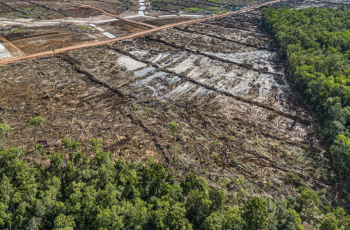Factfile: The Desert Locust
The main method to deal with locusts is a variety of pesticides in very low doses, either by air, or via ground operations.

Desert locusts Alain Photo Credit : BOMMENEL AFP
Nairobi (AFP): The name alone is enough to stir biblical fears of devastation and famine -- an insect foe that breeds prolifically and eats its own weight in food every day.
Here are key facts about the desert locust, which has infested eastern Africa.
Changing behaviour
Desert locusts -- Latin name Schistocerca gregaria -- are typically a solitary species of grasshopper which lives alone and does not cause much damage, and can be found in a semi-arid and desert band stretching from Mauritania to India.
But when abundant rains lead to mass breeding, they become gregarious, forming huge swarms which can travel vast distances, devouring crops and grazing land.
In 2018, cyclones led to uncontrolled breeding in the Arabian Peninsula, and the following year swarms began moving into Yemen, Saudi Arabia and Iran, multiplying every three months, before moving into the Horn of Africa by mid-2019.
The region was experiencing its wettest year in decades, with a record eight cyclones off East Africa, providing excellent conditions for the locusts, which shift with the wind.
The UN's Food and Agriculture Organization (FAO) says the current invasion is known as an "upsurge" -- when an entire region is affected. It would be a "plague" if it affected up to 60 countries.
There were six major desert locust plagues in the 1900s, the last of which was in 1987-89. The last major upsurge was in 2003-05.
Swarms the size of a city
In 2020, one swarm in Kenya was estimated by the FAO at around 2,400 square kilometres (about 930 square miles) -- an area almost the size of Moscow -- meaning it could contain up to 200 billion locusts, each of which consume their own weight in food every day.
Even a small swarm can devour the same amount of food in a day as approximately 35,000 people.
Last year the locusts reached Ethiopia, Somalia, Eritrea, Djibouti, Kenya, South Sudan, Uganda, Tanzania and Sudan, before a lull of a few months.
In December 2020, new swarms emerged in Somalia and Ethiopia, spreading to Kenya, however they are far smaller, with the largest only measuring a few square kilometres.
Swarms have also been reported in Djibouti, Eritrea, Tanzania and Sudan.
The FAO estimated that in 2020 the infestation affected the food supply and livelihoods of some 2.5 million people, and was expected to impact 3.5 million in 2021.
However control operations prevented even worse damage.
"We have prevented already last year a major disaster, we stopped locusts in Kenya, they didn't move to the Sahel region," said FAO east Africa expert Cyril Ferrand.
Tough to control
The main method to deal with locusts is a variety of pesticides in very low doses, either by air, or via ground operations.
They can take several hours, to several days, to act. The toxicity on the environment generally wears off after a day.
Bees, butterflies and other insects are killed, however spray operations are extremely targeted, and post-spray assessments carried out, says the FAO.
Locusts are fiendishly difficult to control, moving up to 150 kilometres (90 miles) daily, and the only time to target them is when they roost for the evening as the air cools down.
-

Indonesia food plan risks 'world's largest' deforestation
2025-04-22 -

Trump tariffs torch chances of meeting with China's Xi
2025-04-22 -

In war-torn Sudan, a school offers a second chance at education
2025-03-02 -

Nepal community fights to save sacred forests from cable cars
2025-02-21 -

Chinese AI companies celebrate DeepSeek, shrug off global curbs
2025-02-21 -
.jpeg)
Students at South Asian University Hold Candlelight Vigil for Nepali Student, Demand Justice
2025-02-21 -

G20 foreign ministers meet in South Africa without US on board
2025-02-20 -

Afghanistan problem 'can be solved': former women's affairs minister
2025-02-20 -

Ghana scrambles to fill $156 million shortfall after USAID freeze
2025-02-19 -

New arena, new attitudes? Cash spat in spotlight at UN nature talks
2025-02-19
